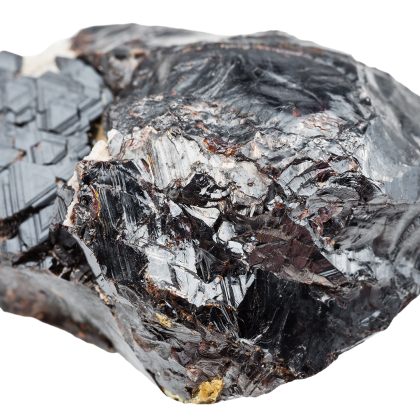Zn • Atomic Number 30

Zinc
The transition metal zinc is classified as a heavy metal. It is bluish-white, brittle at room temperature, and is characterized by its corrosion resistance as well as its role as an essential trace element. Zinc is one of the most abundant metals in the Earth's crust and is usually found in combined form.
The name zinc comes from the Middle High German word Zinke, meaning tooth or prong, referring to the jagged shape zinc forms when it solidifies.
Its main application is corrosion protection of steel through galvanization, as well as alloy production, especially in brass.
With one-third of global production, China is the largest zinc producer and also leads in zinc refining and processing.
The largest zinc mine in the world is located in Alaska, USA. The Red Dog Mine is operated by Teck Resources from Canada.
Nyrstar, a subsidiary of the Swiss group Trafigura specializing in zinc smelting, is the world’s largest zinc producer. Glencore, also based in Switzerland, is another major zinc producer that operates its own mines.
Brass, an alloy of copper and the zinc ore calamine, was already used in ancient times for making coins, jewelry, and armor.
However, zinc was long unknown as a pure metal. In India, zinc was first isolated by distillation as early as the 12th century.
China began producing pure zinc for coins and art objects from the 16th century onward.
In Europe, the German chemist Andreas Sigismund Marggraf successfully isolated zinc as a pure element in 1746.
Starting in 1758, the first European zinc smelter in Belgium began industrial production. Due to its corrosion resistance, zinc is used in various everyday items such as watering cans, sheets, pipes, cutlery, and coins.
In the 19th century, Stanislas Sorel in France developed a galvanizing process to coat iron with zinc (hot-dip galvanizing). This revolutionized shipbuilding and the construction of weather-resistant steel parts. With the discovery of large zinc deposits in Germany, Belgium, and the USA, global zinc production increased tenfold between 1850 and 1900.
At the beginning of the 20th century, zinc-carbon and zinc-air batteries became important energy storage devices.
Since the 1920s, zinc has been recognized as an essential trace element and is used in medicinal ointments and sunscreens.
About half of the zinc production is used in the steel industry to galvanize steel and protect it from corrosion. Zinc alloys such as brass account for one-fifth of zinc consumption.
The construction industry is one of the major consumers of zinc, using it for facade and roofing sheets as well as in the form of galvanized steel beams.
An important inorganic zinc compound is zinc oxide, a direct semiconductor that absorbs UV light while remaining transparent to visible light. Zinc oxide is used in diodes, thin-film transistors (TFT), thin-film solar cells, piezoelectric transducers, sensors, light-emitting diodes, as well as optoelectronic and spintronic devices. It is also a key ingredient in sunscreens and medicinal zinc ointments.
Other applications of zinc include batteries such as zinc-carbon and zinc-air batteries, button cells, and hearing aids.
Zinc sulfide ores such as sphalerite or wurtzite, containing about 65 percent zinc, are the most important source for industrial extraction. In addition, zinc carbonate (also known as calamine or smithsonite) is mined. Zinc ores are often associated with lead.
With one-third of global production, China is the largest zinc producer and also leads in zinc refining and processing. Peru and Australia also extract significant amounts of zinc. Australia holds the world’s largest known zinc reserves, followed by China and Russia.
The largest zinc mine in the world is located in Alaska, USA. The Red Dog mine is operated by Canadian company Teck Resources.
Together with Glencore from Switzerland, Teck Resources dominates zinc mining.
Nyrstar, a subsidiary of the Swiss group Trafigura, leads in zinc smelting and refining. It produces ten percent of the global market for refined zinc. Nyrstar operates Europe’s largest zinc refinery in Balen, Belgium, with additional sites in Australia and the USA.
The Indian company Hindustan Zinc (HZL) is the largest integrated zinc producer. HZL, a subsidiary of the Vedanta Group, operates five mines and five zinc smelters in India.
The global annual production amounts to around twelve million tons.
About 30 percent of zinc is recovered through recycling.
Aluminum and plastics replace galvanized sheets in the automotive industry.
Aluminum alloys, cadmium, paints, and plastic coatings substitute zinc coatings in other applications.
Aluminum and magnesium alloys are important substitutes for zinc die-casting alloys.
Many elements replace zinc in the chemical, electronics, and pigment industries.

